Tyre pressure monitoring, TPMS, detailed description
| Tyre pressure monitoring, TPMS, detailed description |
|
||||||||||
| Note | ||
|
Remember that TPMS measures tyre pressure with great accuracy in comparison with the tyre pressure gauges available at petrol stations for example. |

| General |
Automatic tyre pressure monitoring informs the driver if the tyre pressure in one of the tyres decreases when the speed of the car is above 20 km/h. The control module is calibrated for the nominal tyre pressure and warns the driver with a warning message in SID if the pressure decreases below the nominal pressure. If the pressure decreases to 1.64 bar (24 psi) or by 0.2 bar/min (3 psi/min), which is equivalent to a puncture, then an alarm message is shown in SID.
The control module uses the I-bus information on vehicle speed and gear position.
| Conditions |
As long as the ignition key is in the ON position the tyre pressure is monitored constantly and the system works in two main conditions:
Active condition
The system is active when vehicle speed exceeds 20 km/h. Then the sensors start to send information on tyre pressure at regular intervals. If any value deviates from the tyre pressure limits then the control module sends a warning or alarm message on the I-bus. The MIU/SID reads the message and shows it in the display.During reversing the control module uses the bus message that reverse gear is engaged. It then reads no values from the sensors.
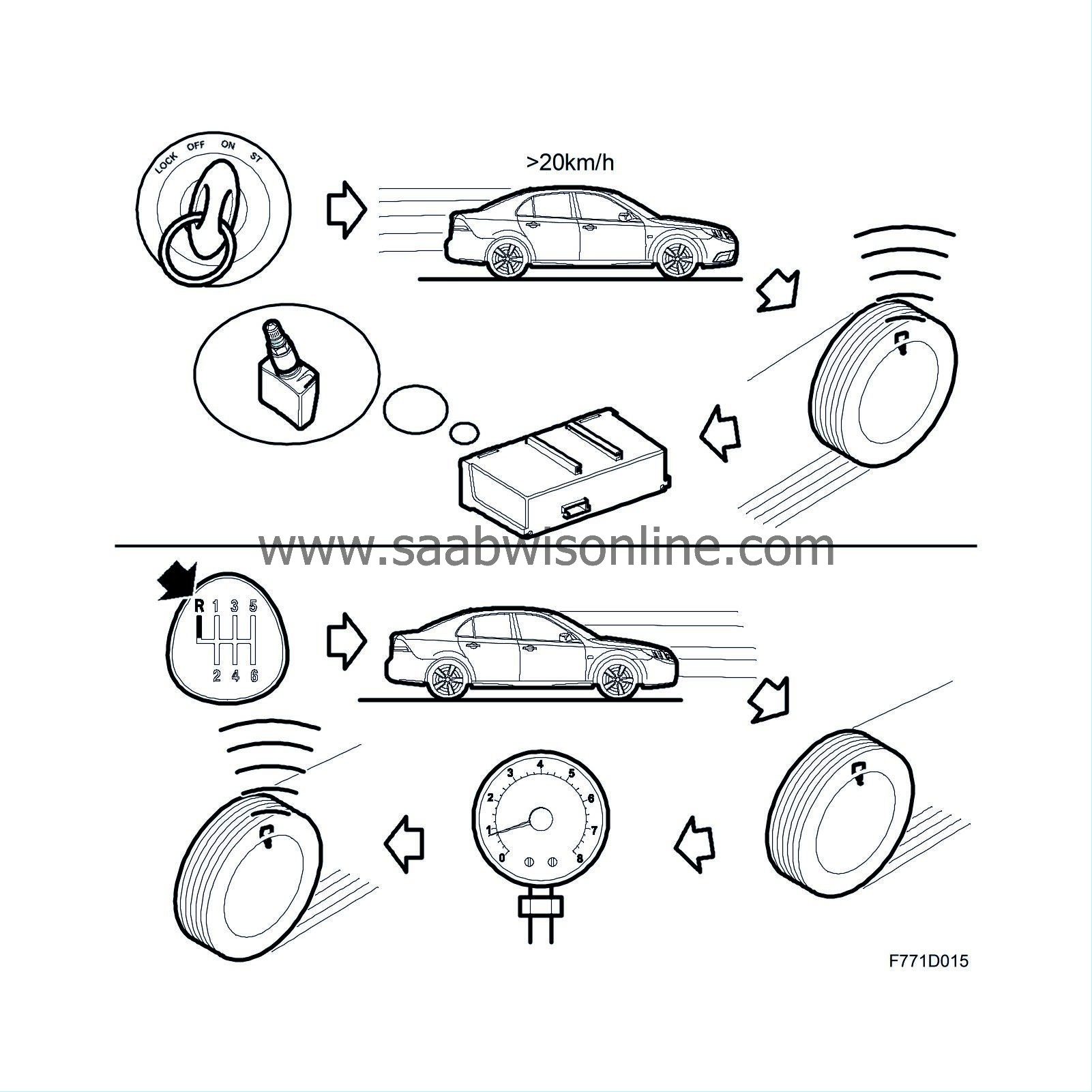
Resting condition
The system adopts resting condition when vehicle speed is below 20 km/h.In resting condition the sensors stop transmitting but continue to monitor the tyre pressure. If a tyre pressure decreases to one of the alarm levels then a message is sent to the control module.
They return to active condition when speed exceeds 20 km/h again.
| Automatic programming |
When pulling off after starting, the first instance of the active condition is a programming procedure, which continues until the four sensors, each of which has a unique code, have been identified. By means of this communication the control module "learns" which sensor applies for each respective wheel. This procedure takes about 10 minutes to carry out. On the occasions when the system cannot identify where the sensor is, the control module starts by assuming that the situation is the same as during the latest journey.

If the control module does not receive any communication from one or more sensors, although not all sensors, within 10 minutes of driving above 20 km/h then a system fault message is sent on the I-bus. This is read by the MIU/SID and is shown on the display.
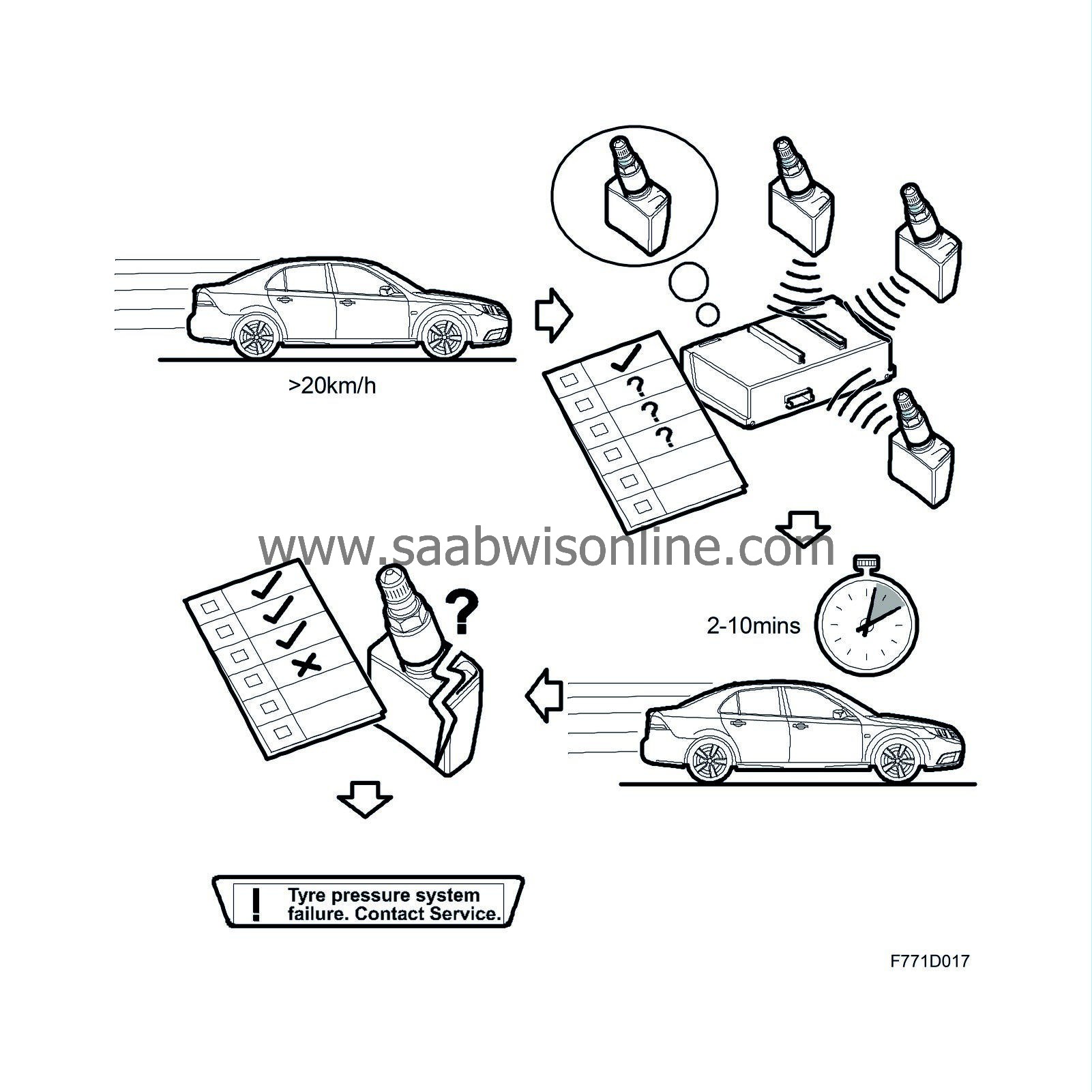
If the control module does not make contact with the vehicle's sensors during the programming phase, i.e. when all wheel rims have no sensor, then the system automatically changes to the so-called "winter mode", except for the US/CA market. In these markets the control module sends out a system fault message on the I-bus after each programming and this is read by the MIU/SID and is shown on the display.
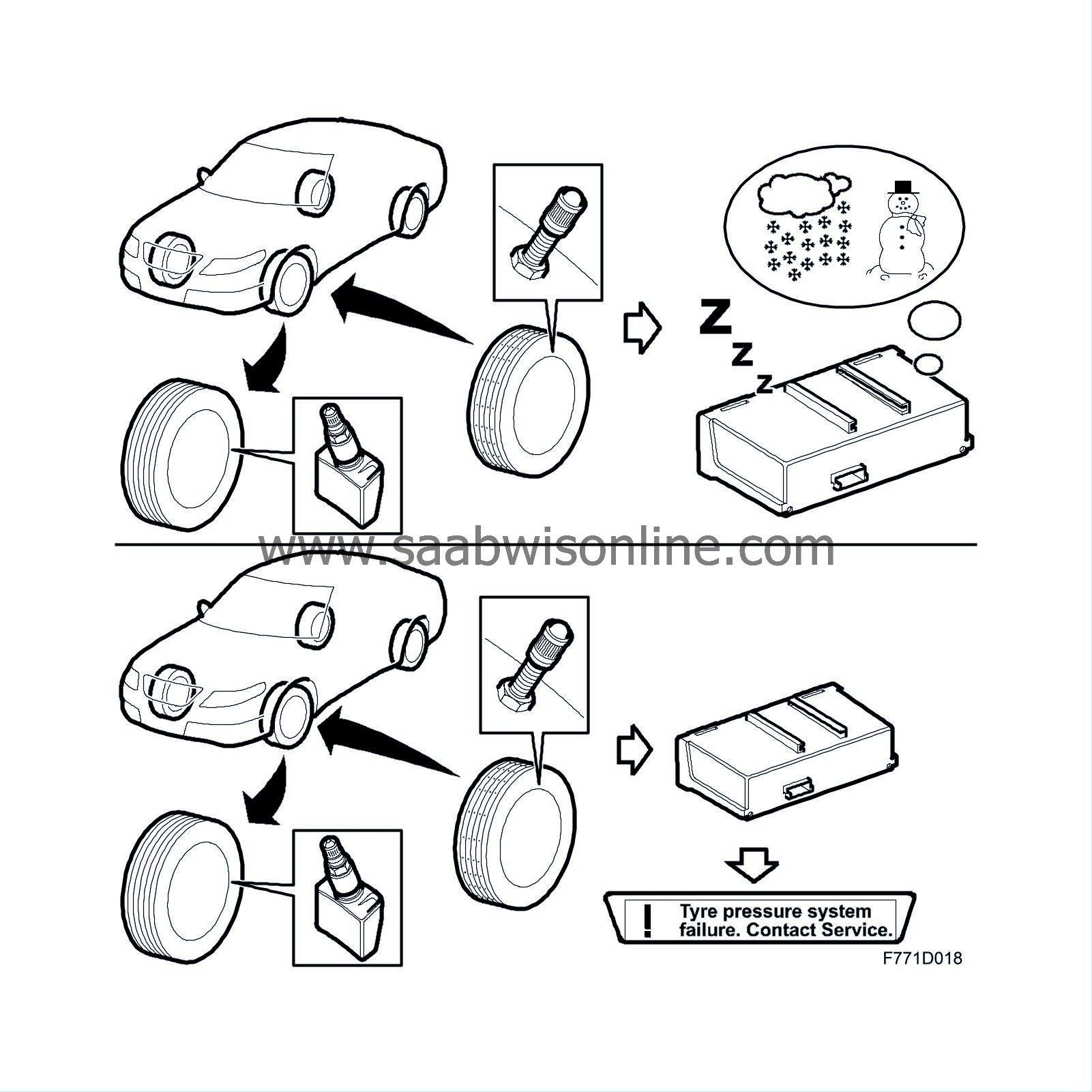
| Driving |
When the programming phase is completed, the sensors remain activated at speeds above 20 km/h. This means that the wheels must rotate for the system to be operating. In this way energy is saved, and the service life of the battery is around 10 years or 160 000 km. When the battery voltage is too low the control module sends a system fault message on the I-bus. The message is read by the MIU/SID and is shown on the display.
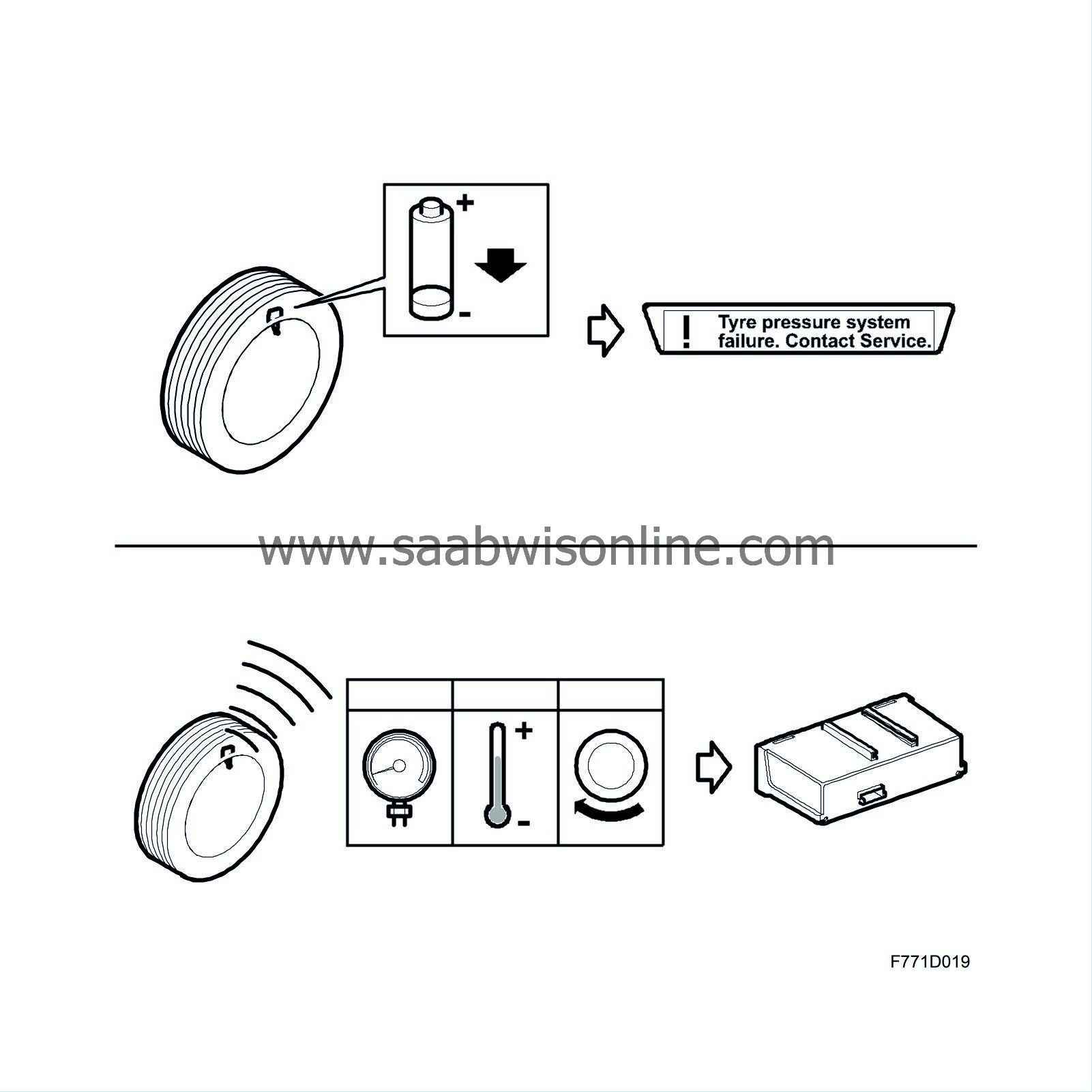
The sensor measures pressure and temperature in the tyre and the rotation direction of the wheel. The temperature value is not used in the US/CA market.
The sensors are fitted in special Saab wheel rims. Normally the sensor measures every 10 seconds and transmits every 30 seconds during the programming phase, otherwise it is once per minute. If the pressure decreases by more than 0.08 bar (1 psi) from the latest measurement then a new transmission takes place after 10 seconds.
| Shut-off |
When the ignition key is turned to the LOCK position the system immediately stops working. New programming must be carried out when starting. Not until after then can a message be displayed.
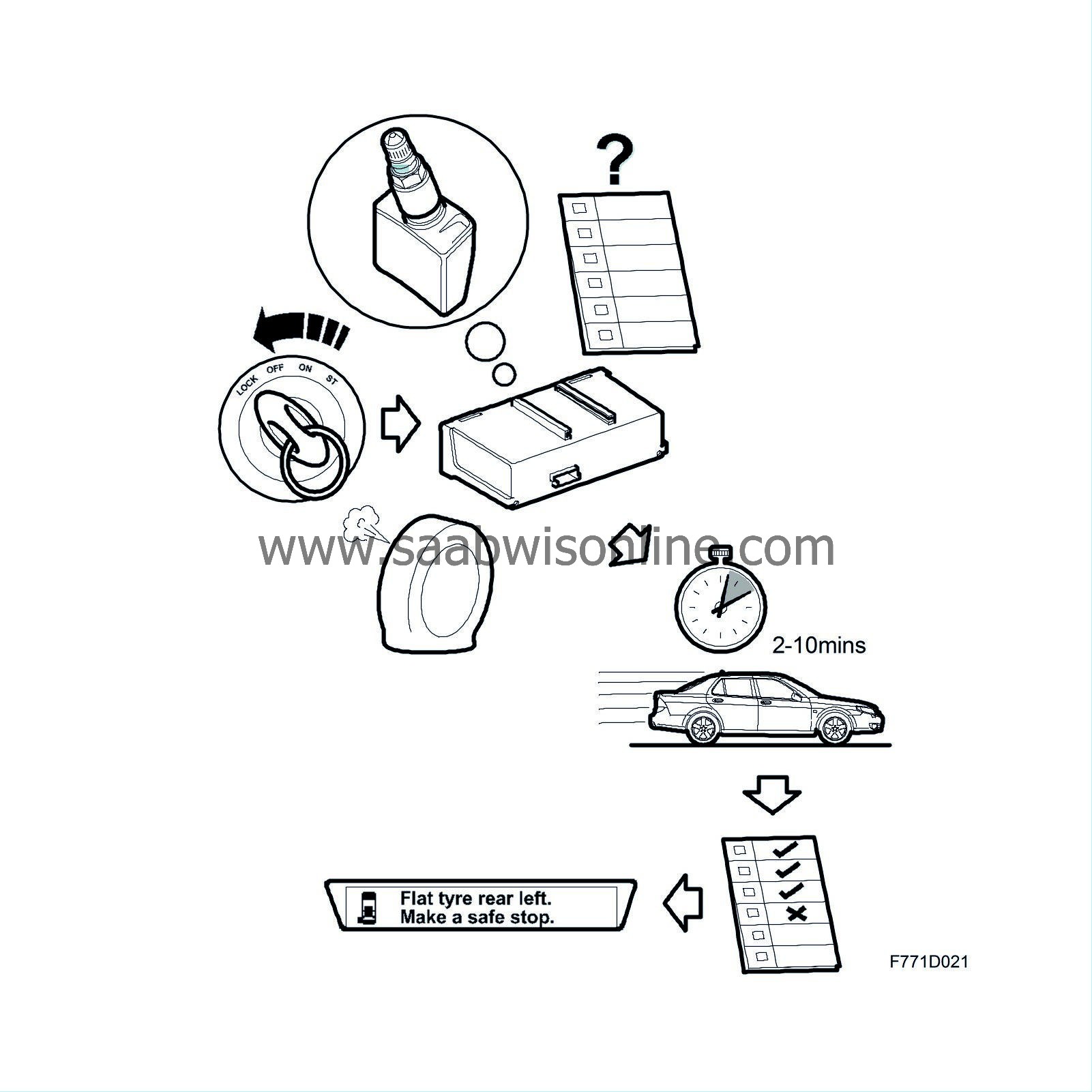
| Tyre pressures |
On delivery the system is programmed for a nominal tyre pressure in accordance with the level specified on the vehicle's label. The level depends on the wheels and equipment specified for the vehicle.
When replacing the control module or changing tyre size the control module must be calibrated using Tech 2.
| Error messages and limit values |
Tyre pressure monitoring can display a warning message or an alarm message for each tyre. The message indicates how serious the fault is and which tyre is affected. In addition, a system fault message may be shown.
A warning message can be acknowledged and removed from the MIU/SID using the Clear button in the steering wheel controls. The message will be shown at the next ignition if the fault remains.
Only the message text can be deleted in the event of an alarm message, while the fault symbol is shown until the fault is rectified.
Market US/CA
There is no compensation for the temperature of the tyres.The limit values depend on the nominal tyre pressure programmed into the control module. In turn, this is dependent on the tyres specified for the vehicle.
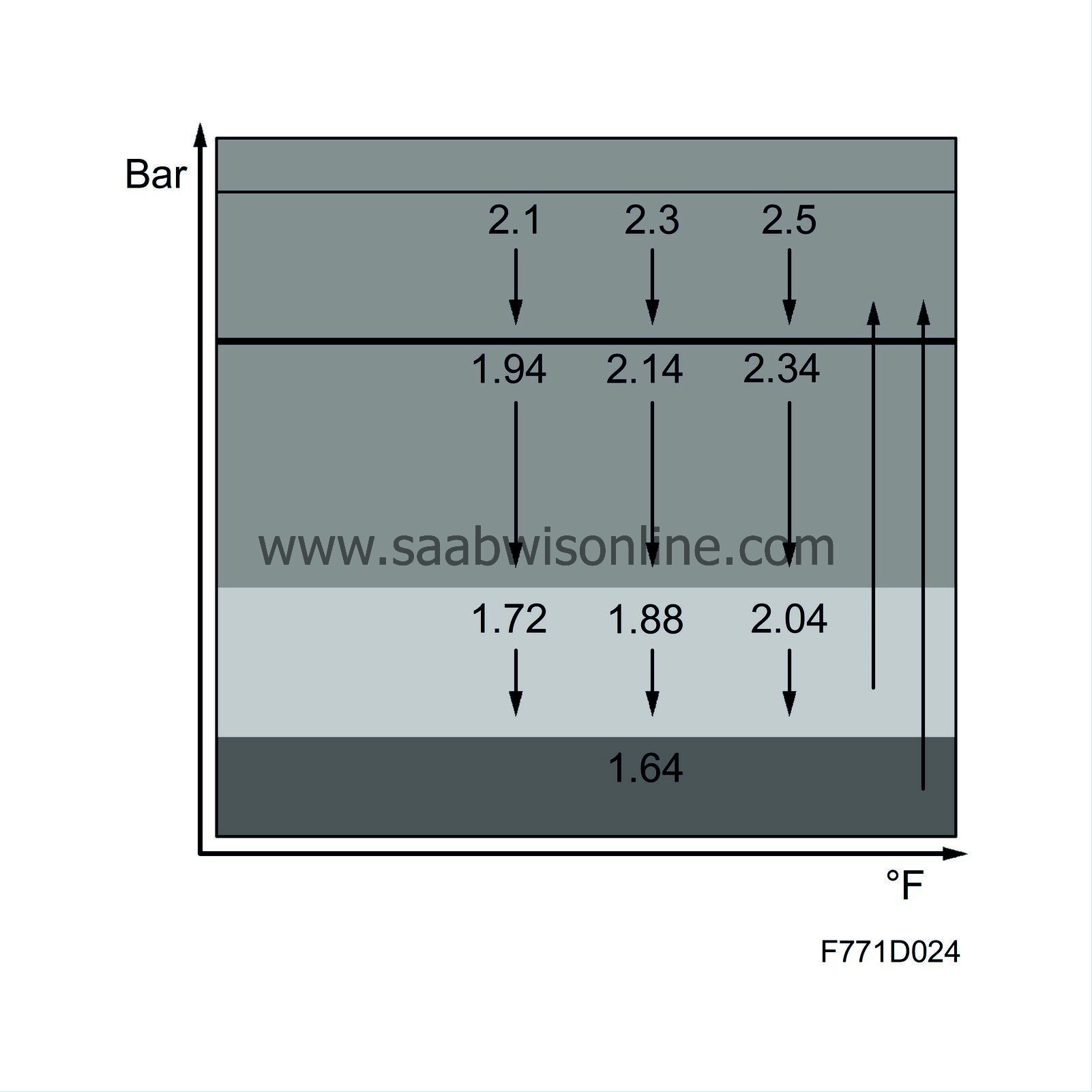
For example, if the system is programmed for a nominal tyre pressure of 2.3 bar (33 psi) then a warning message is obtained when the tyre pressure has decreased to 1.88 bar (27 psi). An alarm message is obtained for all nominal tyre pressures when the tyre pressure decreases to 1.64 bar (24 psi). For a warning/alarm message to be reset, the tyre in this case must be inflated to at least 2.14 bar (31 psi).
A warning message is shown for each wheel, e.g.:
Tyre pressure low, rear left.
Check the tyre.
An alarm message is also obtained when the tyre pressure decreases by 0.2 bar/min (3 psi/min) or faster. The alarm message is shown for each wheel, e.g.:
Puncture, rear left.
Stop.
Other markets
The limit values depend on the nominal tyre pressure programmed into the control module. In turn, this is dependent on the tyres specified for the vehicle.
Tyre temperatures between -10 ºC and +35 ºC affect the limit values.
For example, if the system is programmed for a nominal tyre pressure of 2.3 bar (33 psi) then, at a tyre temperature of +20 ºC, a warning message is obtained when the tyre pressure has decreased to 1.9 bar (27 psi). An alarm message is obtained when the tyre pressure has decreased to 1.7 bar (25 psi). For a warning/alarm message to be reset, the tyre in this case must be inflated to at least 2.14 bar (31 psi). At a tyre temperature of +35 ºC the corresponding values are 2.02 bar (29 psi) and 1.82 bar (26 psi) respectively.
If the tyre pressure is less than 200 mbar (3 psi) under the limit value in question then a warning message will only be shown after 12 minutes and an alarm message only after 4 minutes. This is in order to reduce the risk of error messages during starting on a cold morning for example. However, if the tyre pressure is less than 1.64 bar then the alarm message is shown immediately.
The warning message is shown for each wheel, e.g.:
Tyre pressure low, rear left.
Check the tyre.
An alarm message is also obtained when the tyre pressure decreases by 0.2 bar/min (3 psi/min) or faster. The alarm message is shown for each wheel, e.g.:
Puncture, rear left.
Stop.
System fault message
This is a type of warning message and is shown if there is an error in the control module or if a sensor is missing:System fault.
Contact workshop.
This message is shown when the customer changes to the spare wheel in the event of a puncture for example. The system will then send a system fault message on the I-bus as the spare wheel does not have a sensor. The message is read by the MIU/SID and is shown on the display.
Refilling the air
When air is refilled the tyre pressure must reach a minimum level for the error message to be reset. The level depends on the type of tyre and also the temperature of the tyres for certain markets.If air is refilled after the key has been turned to the LOCK position (and possibly also removed) and the vehicle is then started, then the error message remains until the programming phase is finished and the system has checked that the tyre pressure is above the limit value.
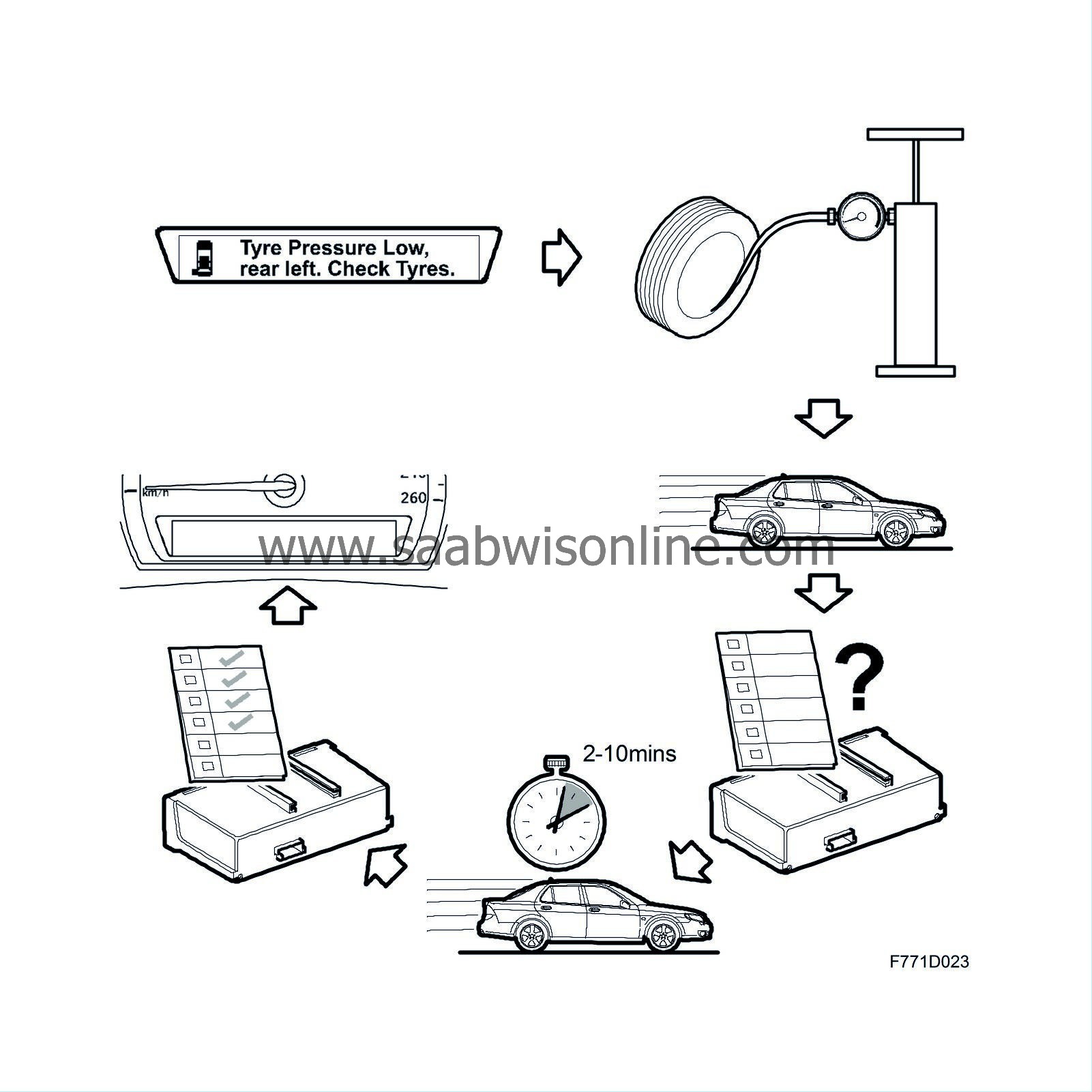

 Warning
Warning

